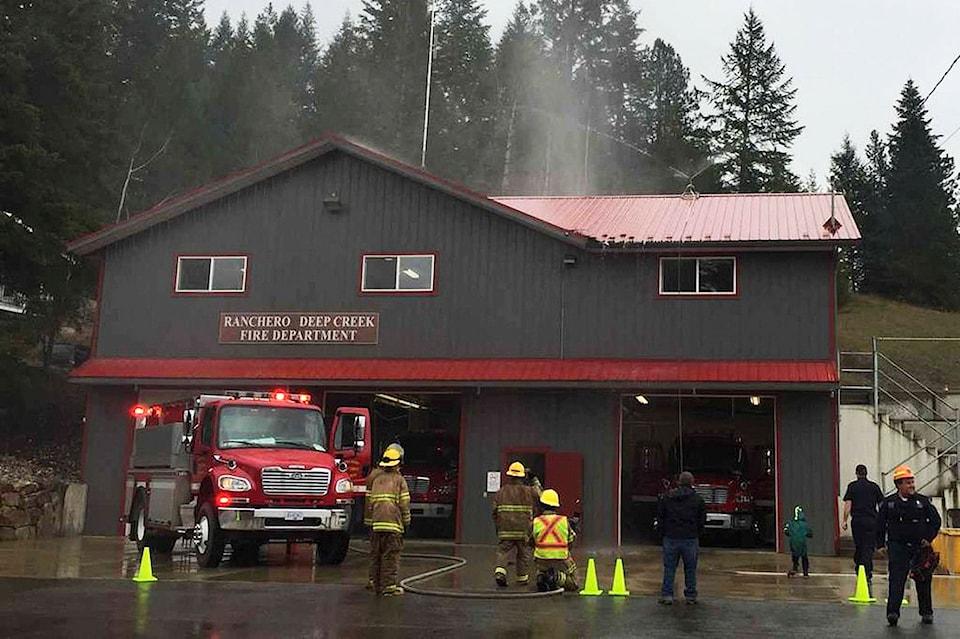With summer wildfires becoming a part of life in B.C.’s Interior, a Salmon Arm man has created an innovative way for property owners to protect their homes and other buildings.
Bryan Coffey spent years refining his design for a special sprinkler he calls the Water Winger. The result is a powerful sprinkler system fitted with wheels and spring-loaded stainless-steel arms which allow it to be pulled over the eaves of any style of a roof with ropes and then sit snugly on the top.
The idea for the Water Winger came in 2003 when Coffey scrambled to protect the remote cabin he was living in from a wildfire near Adams Lake. The destructive McLure-Barriere fire was many kilometres away and Coffey didn’t expect it to affect him, but then suddenly ash and singed pine needles began to drift down from the summer sky. A small satellite fire, ignited by drifting embers of the McLure-Barriere blaze, had started only two kilometres from the cabin.
Read More: Update: Video of large grass fires near Chase
Read More: Wildfire breaks out northeast of Squamish
Coffey had a canoe set up at the water’s edge, ready to make his escape if the fire spread, but he decided something should be done to save the cabin. He thought the best place for a sprinkler was the roof of the cabin and began rigging up safety lines for work on the roof as he did when he cleaned the chimney.
Along with the problem of getting onto the roof safely, Coffey found his garden sprinklers ill-suited to the task of spraying from the peak of a steep roof. As he was rigging up a mount for the garden sprinklers out of spare lumber, word came that the wildfire service had doused the oncoming fire and Coffey’s cabin was safe. The impression Coffey was left with was there must be a safer and more effective way to protect structures from wildfires.
After numerous prototypes built in his workshop and eventually tested by local fire department structural protection units, Coffey introduced a market-ready version of the Water Winger on April 1.
The finished device can be dragged onto the very peak of a roof using ropes, without any potentially-dangerous ladder climbing necessary; its spring-loaded arms provide a sturdy base for the heavy-duty sprinkler.
The Water Winger is designed to be pulled onto roofs by throwing a weighted rubber ball about the size of a tennis ball attached to a very strong arborists’ line over the roof. For larger buildings, a tennis-ball thrower, like the kind commonly seen at dog parks, can be used to increase distance. Once the line is over the top of the roof Coffey said the sprinkler can be hauled to the peak in minutes.
Read More: Smoke from wildfire is like a ‘chemical soup,’ says fire researcher
Read More: Crews fighting 250-hectare wildfire near Kamloops
To prevent damage to the Water Winger as it is pulled over the eaves of roofs, many of the key components are made of stainless steel. Coffey said the all-metal construction also makes the Water Winger suitable for long-term storage.
Coffey said the device was originally designed with structural protection units in mind, but he did not anticipate the demand he is seeing from homeowners looking to take steps to protect their homes. Of the approximately 20 Water Wingers Coffey and a few employees who help with assembly have made and sold, he said about half have been to home owners with the other half going to structural protection units.
Further information and videos of the Water Winger in action can be found at www.waterwinger.ca
@SalmonArm
jim.elliot@saobserver.net
Like us on Facebook and follow us on Twitter
